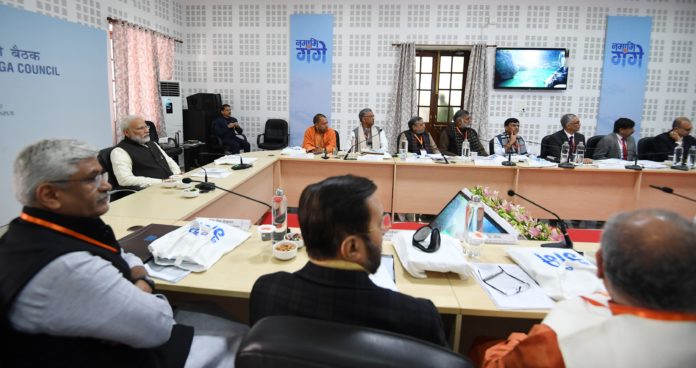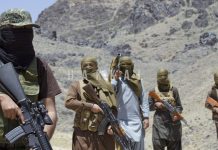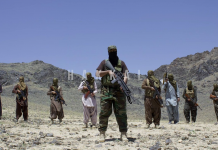Kanpur (NVI): Describing rejuvenation of Ganga as a long-pending challenge for the country, Prime Minister Narendra Modi today said the task would require fullest cooperation from the public at large and greater awareness of best practices from cities situated along the banks of national rivers.
He made the remarks while chairing the first meeting of the National Ganga Council, which was attended by Union Ministers concerned besides Chief Ministers of Uttar Pradesh and Uttarakhand and Deputy Chief Minister of Bihar.
There was no representative from West Bengal and Jharkhand did not participate because of the ongoing elections and the Model Code of Conduct being in force, according to an official statement.
The Prime Minister, while reviewing the progress of work done and deliberating on various aspects of cleaning Ganga with a focus on ‘swachhta’, ‘aviralta’ and ‘nirmalta’, observed that ‘Maa Ganga is the holiest river on the sub-continent and its rejuvenation should embody a shining example of cooperative federalism.
He said “a lot had been accomplished” since his government took up the ‘Namami Gange’ programme in 2014 as a comprehensive initiative integrating various government efforts and activities with the aim of pollution-abatement, conservation and rejuvenation of Ganga.
“But much more needs to be done,” Modi noted.
“Efficiency of District Ganga Committees should be improved in all districts, in order to provide a effective framework for expeditious implementation of plans,” he told the meeting, according to the statement.
The Prime Minister urged for a holistic thinking process where ‘Namami Gange’ evolves to ‘Arth Ganga’ or a sustainable development model with a focus on economic activities related to Ganga.
As part of this process, farmers should be encouraged to engage in sustainable agriculture practices, including zero budget farming, planting of fruit trees and building plant nurseries on the banks of Ganga.
Priority could be given to women Self Help Groups and ex-servicemen organizations for these programs.
Such practices, along with creation of infrastructure for water sports and development of camp sites, cycling and walking tracks etc, would help to tap the ‘hybrid’ tourism potential of the river basin area- for purposes of religious as well as adventure tourism.
The income generated from encouraging eco-tourism and Ganga wildlife conservation and cruise tourism etc. would help to generate sustainable income streams for cleaning of Ganga.
For monitoring the work progress and activities from various schemes and initiatives under Namami Gange and Arth Ganga, the PM also gave directions for the setting up of a Digital Dashboard where data from villages and urban bodies should be monitored on a daily basis by Niti Ayog and Ministry of Jal Shakti.
He also said that like aspirational districts, all districts bordering Ganga should be made a focus area for monitoring efforts under Namami Gange.








